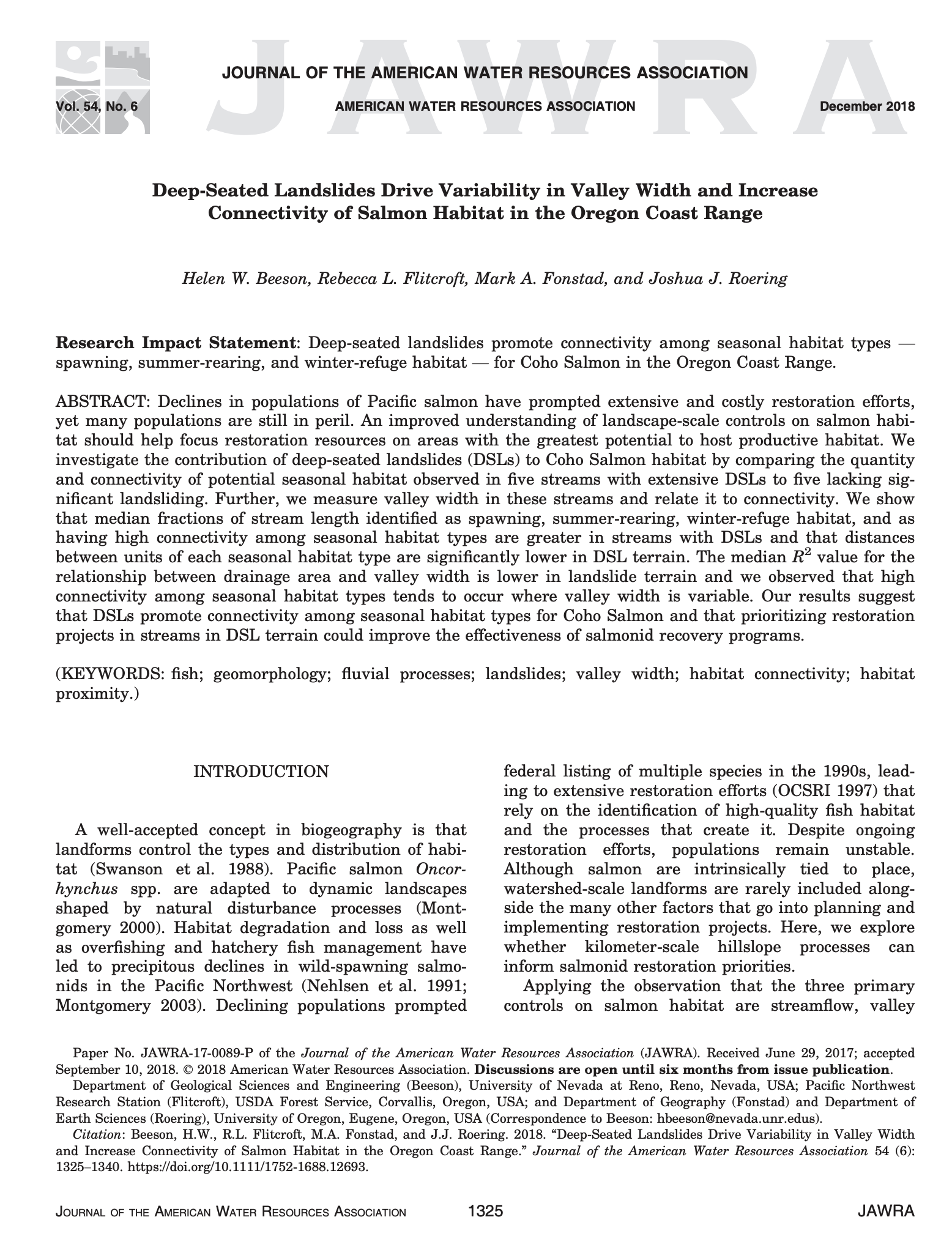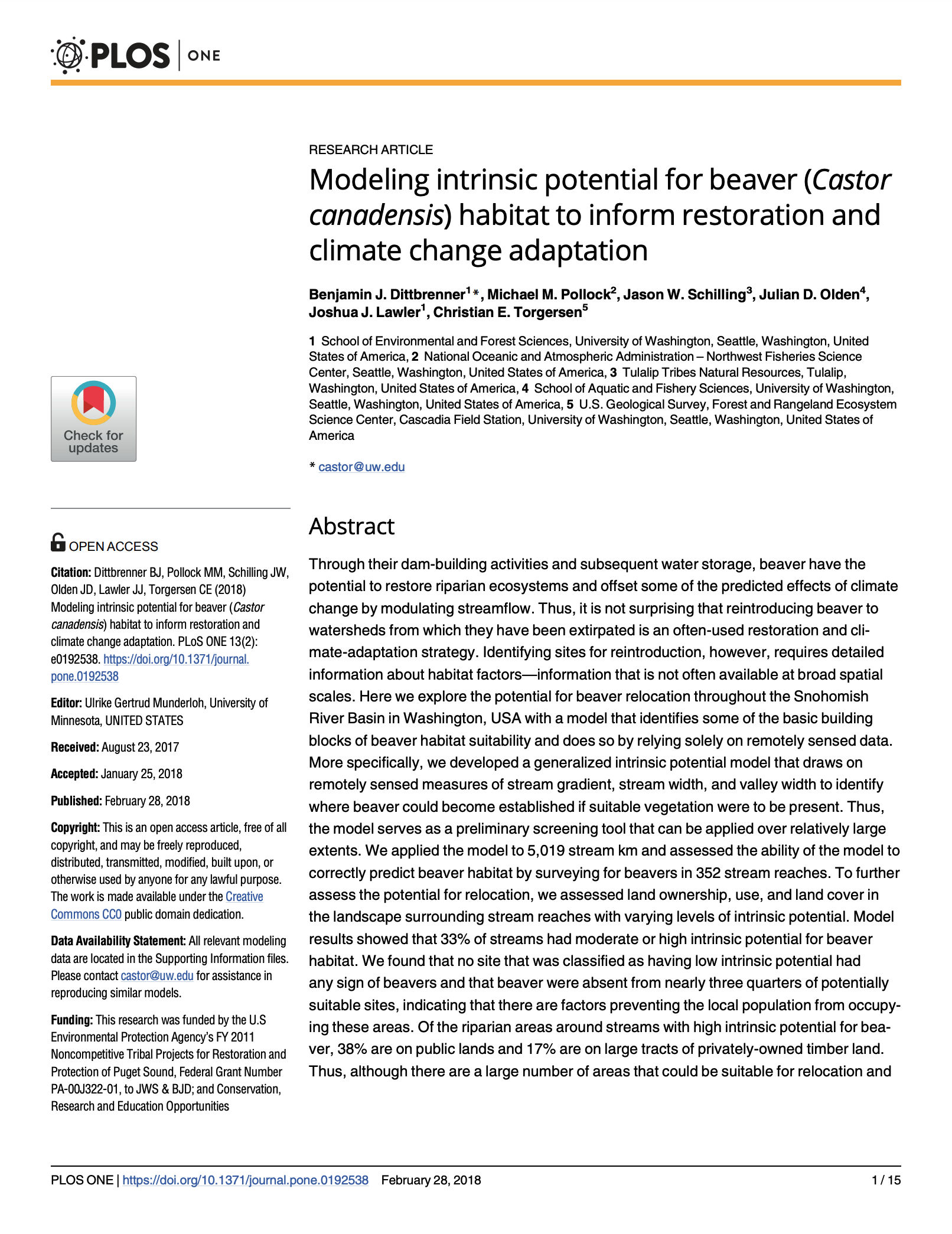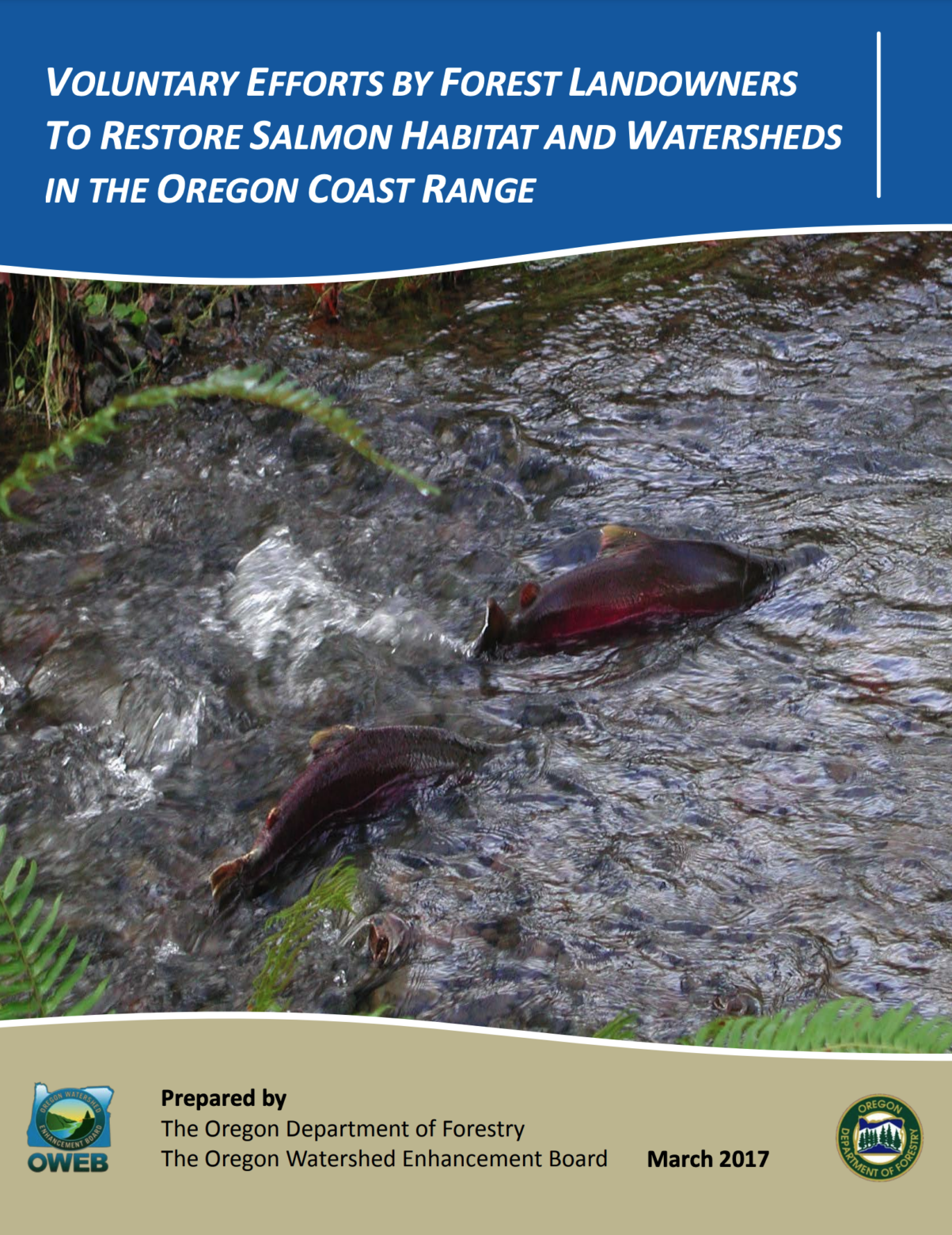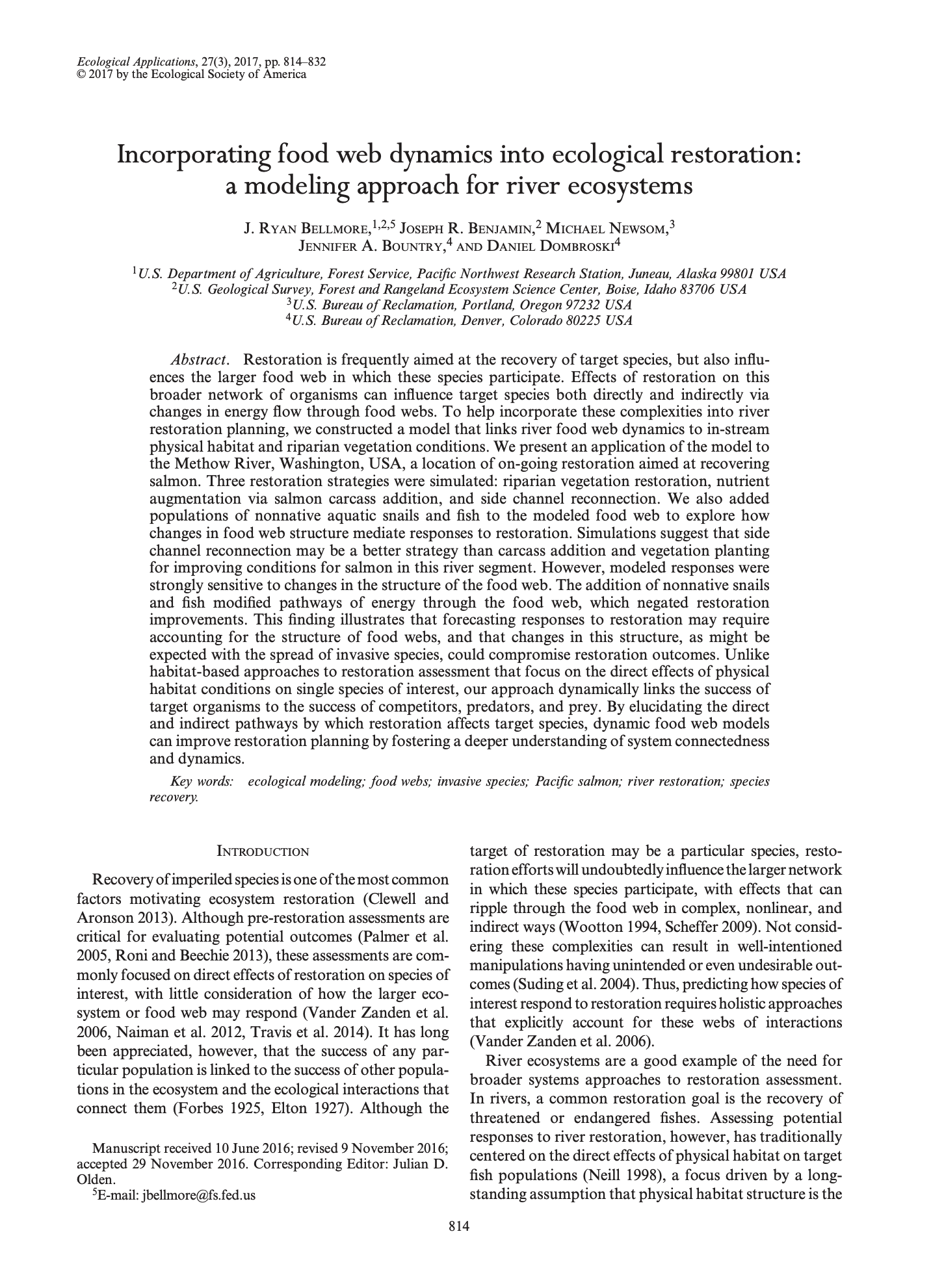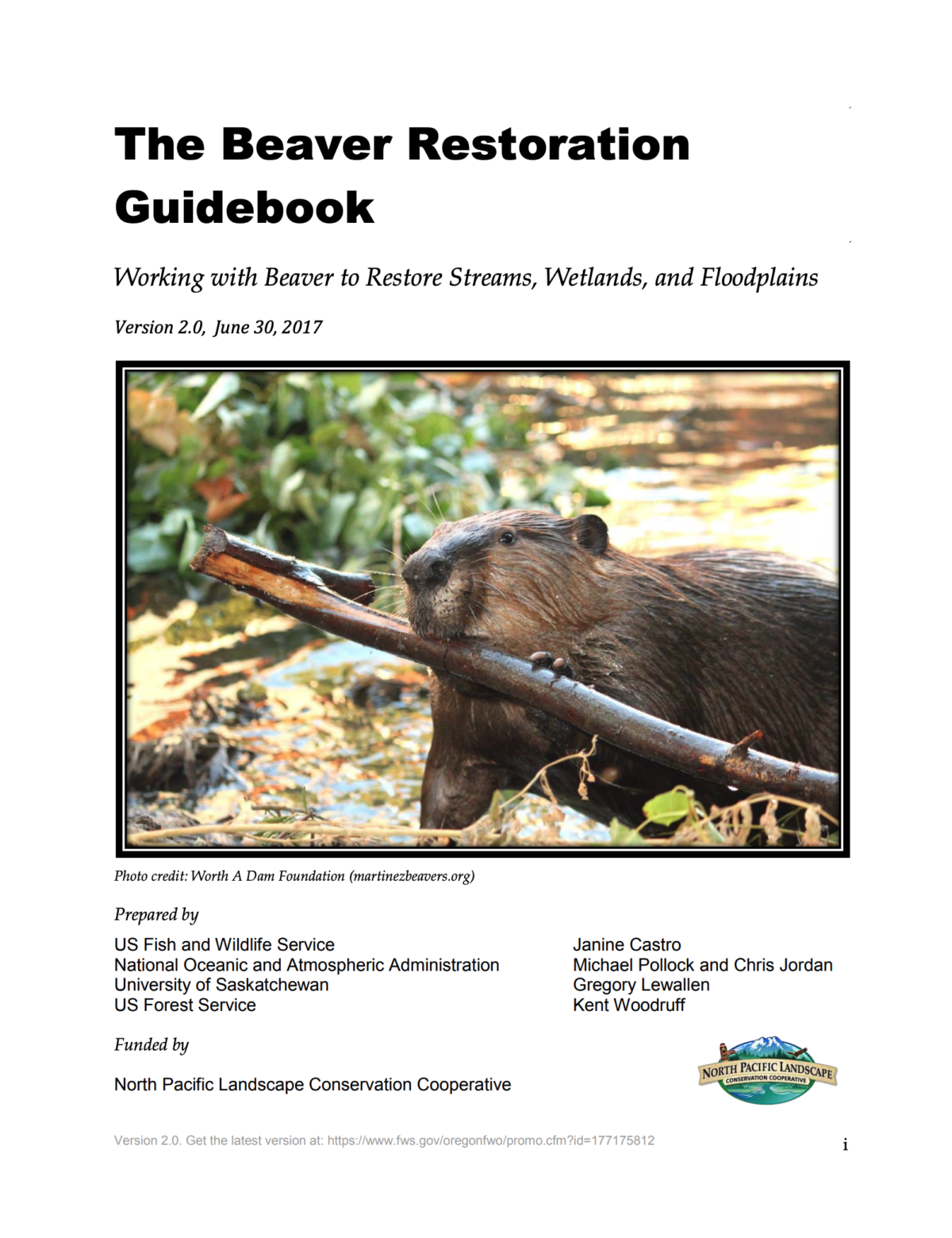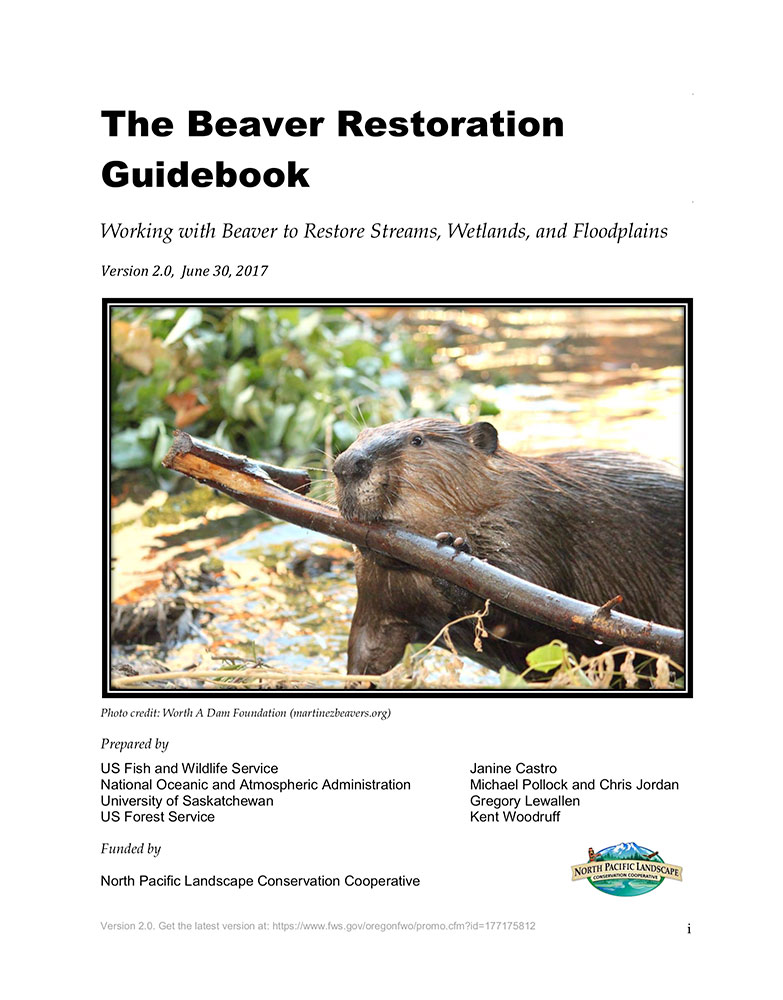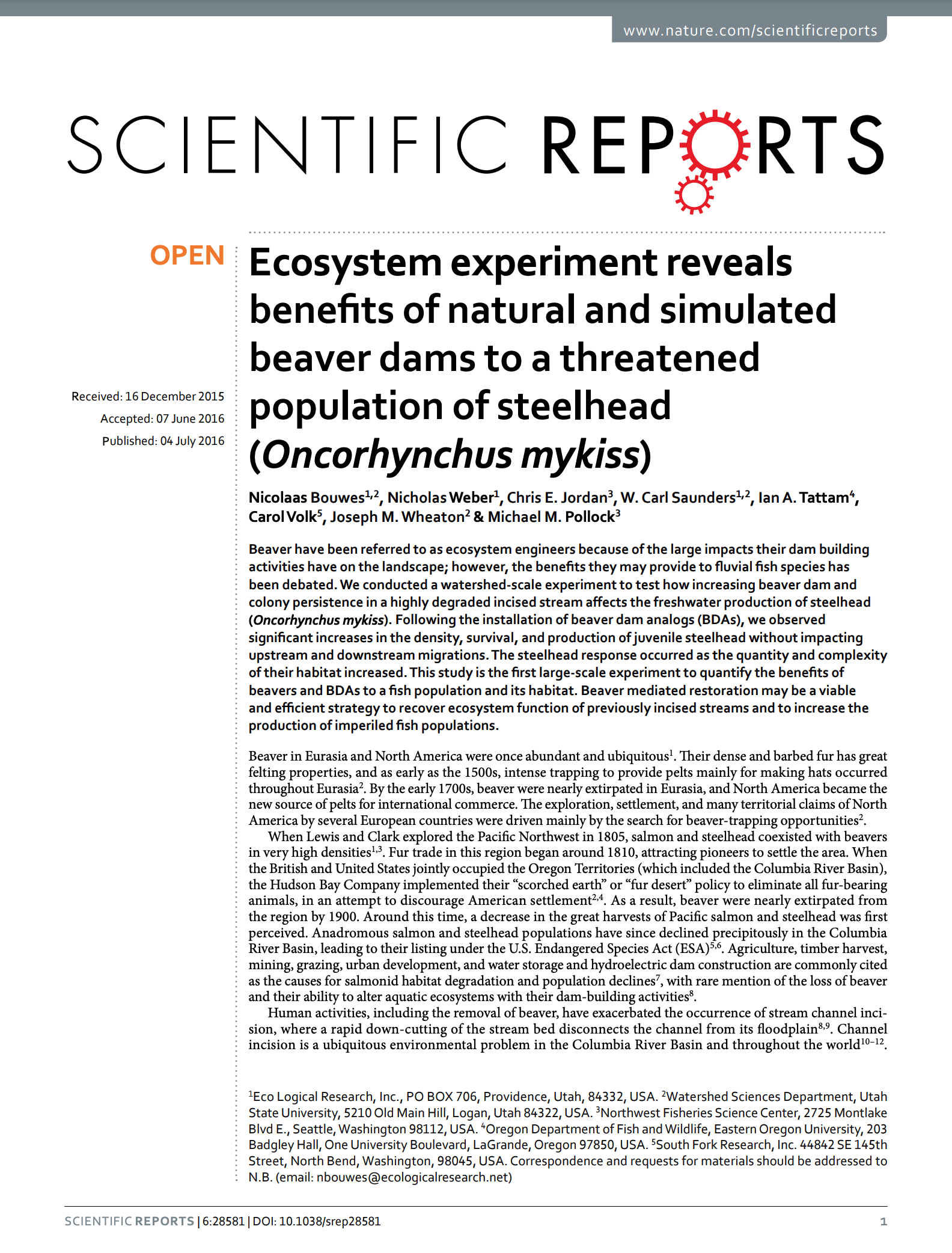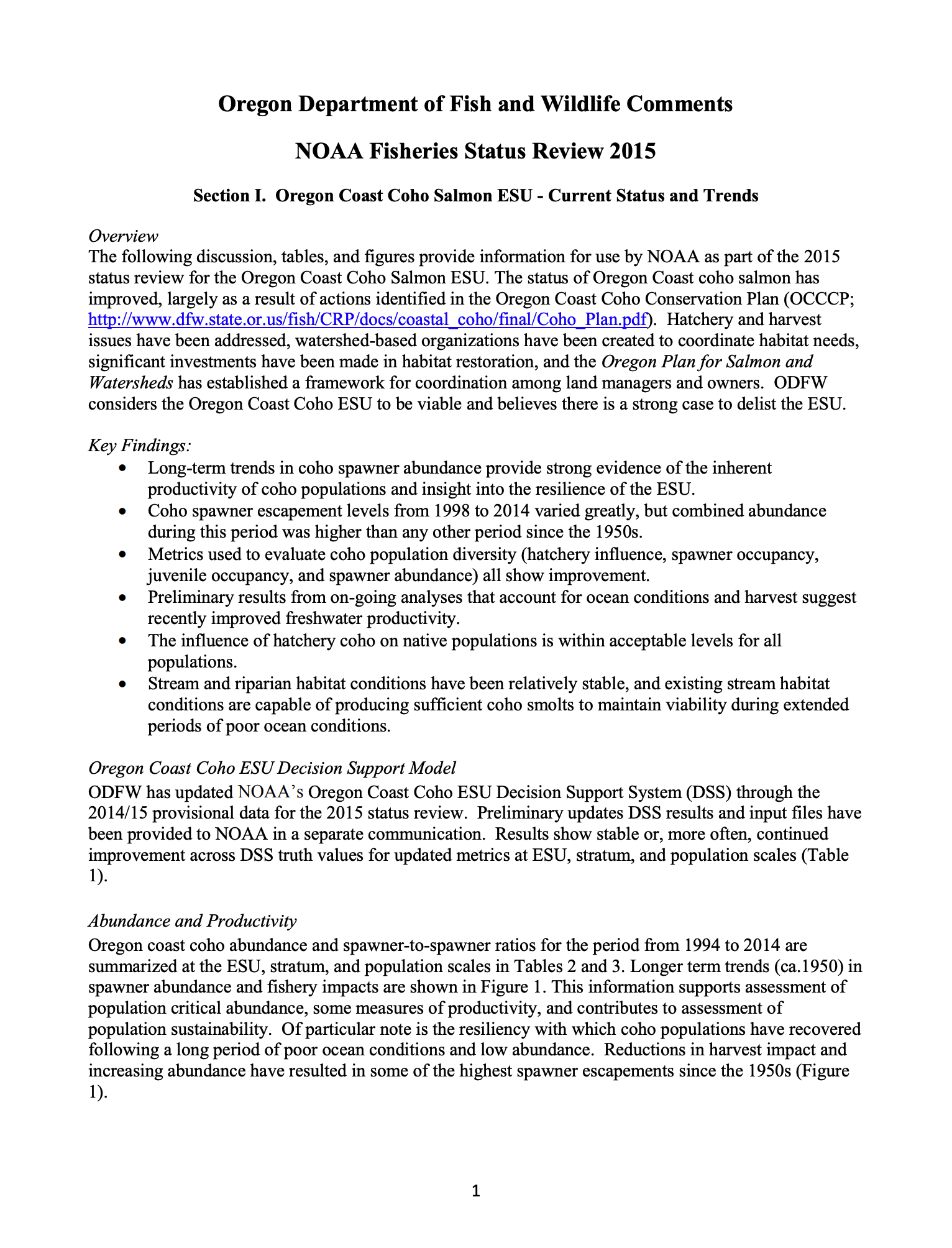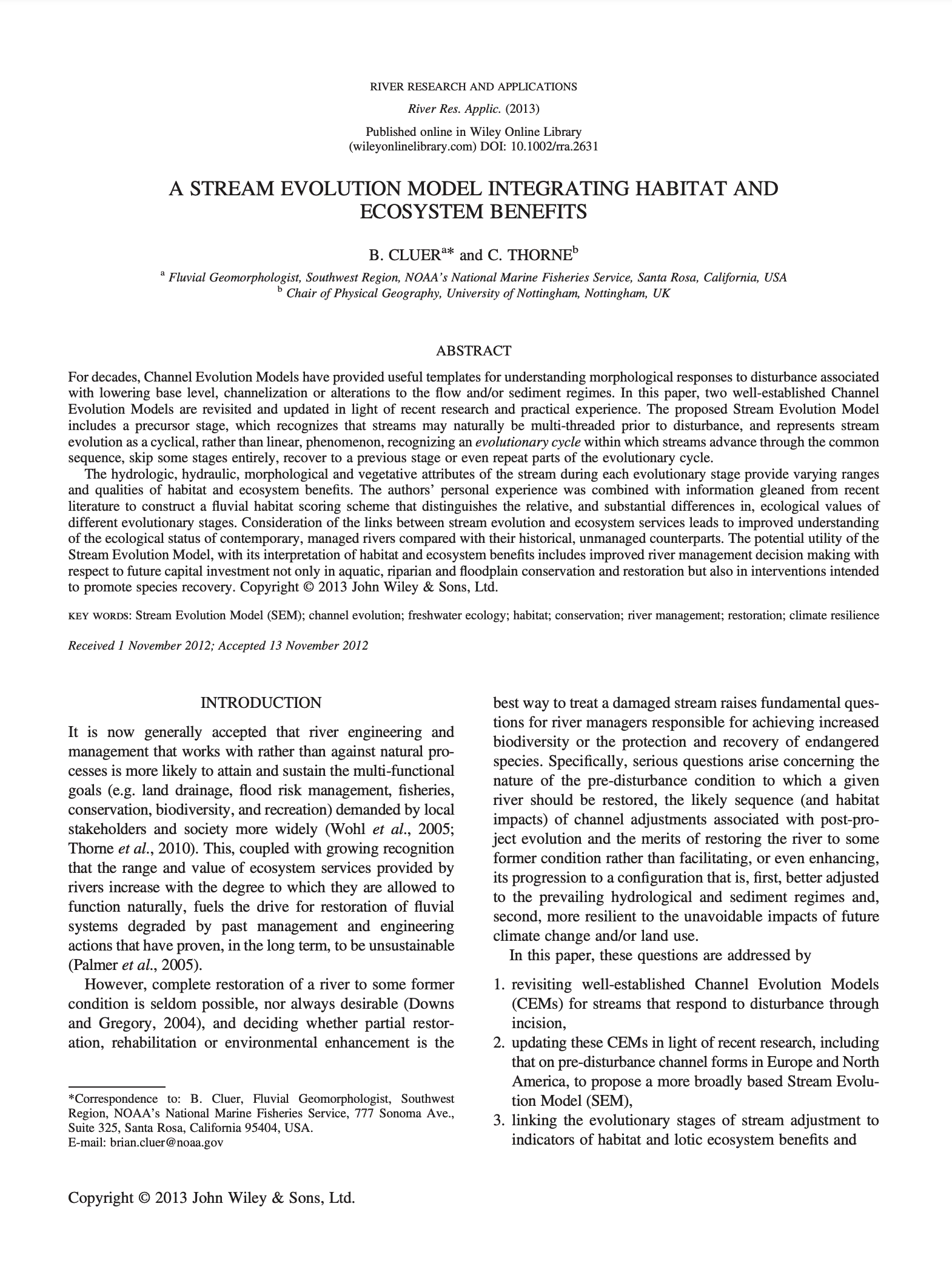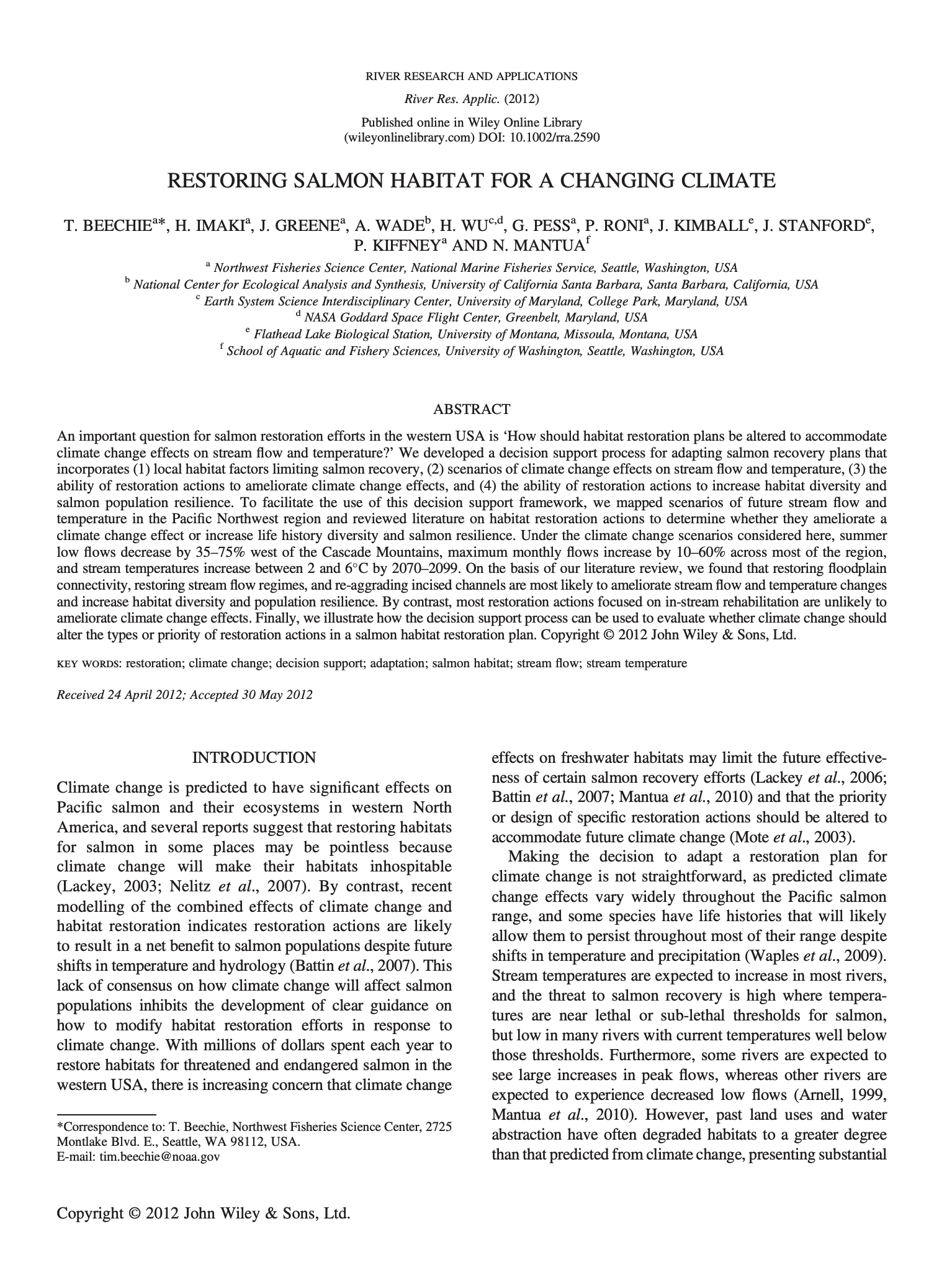Landslides Drive Variability in Valley Width & Increase Connectivity of Salmon Habitat in the Oregon Coast Range (Beeson et al, 2018)
admin2022-06-28T13:42:29+00:00Declines in populations of Pacific salmon have prompted extensive and costly restoration efforts, yet many populations are still in peril. An improved understanding of landscape-scale controls on salmon habitat should help focus restoration resources on areas with the greatest potential to host productive habitat. We investigate the contribution of deep-seated landslides (DSLs) to Coho Salmon habitat by comparing the quantity and connectivity of potential seasonal habitat observed in five streams with extensive DSLs to five lacking significant landsliding. Further, we measure valley width in these streams and relate it to connectivity. We show that median fractions of stream length [...]

